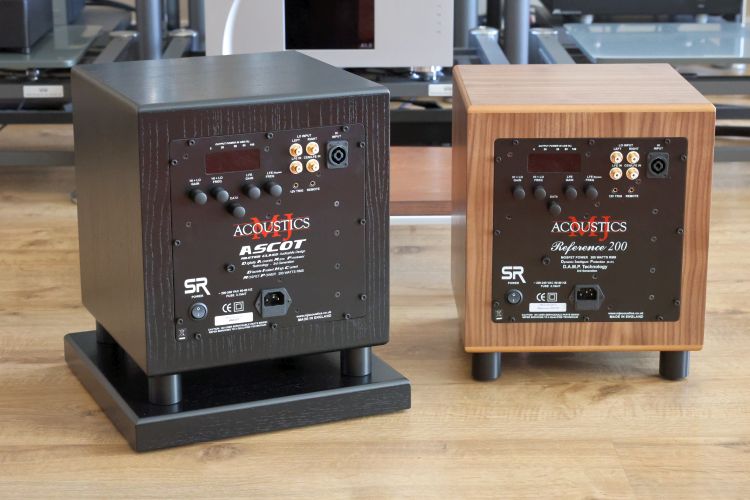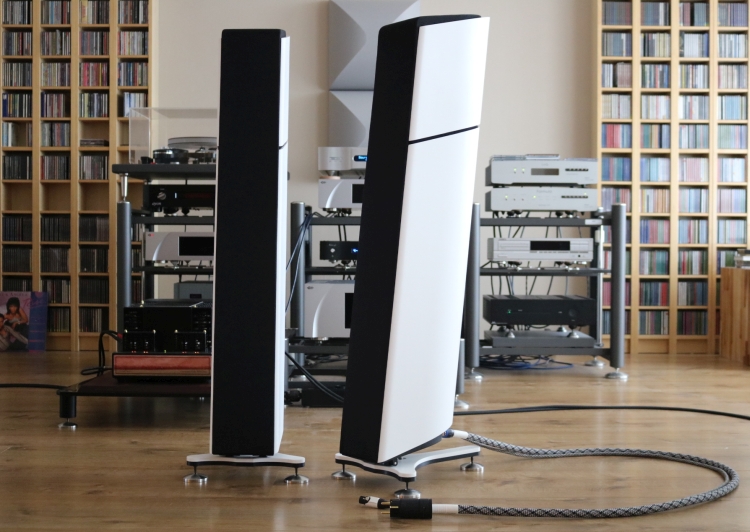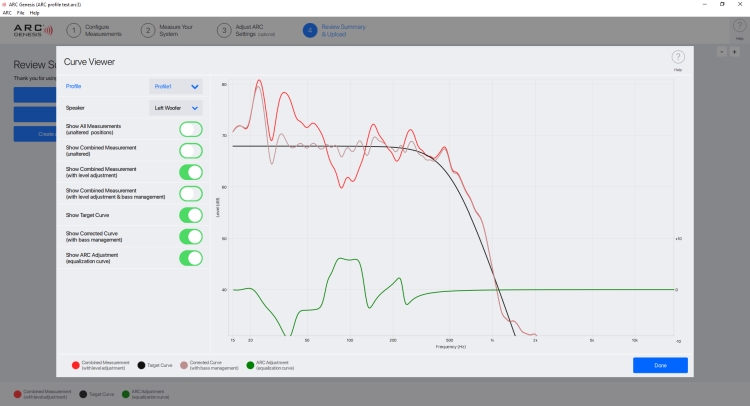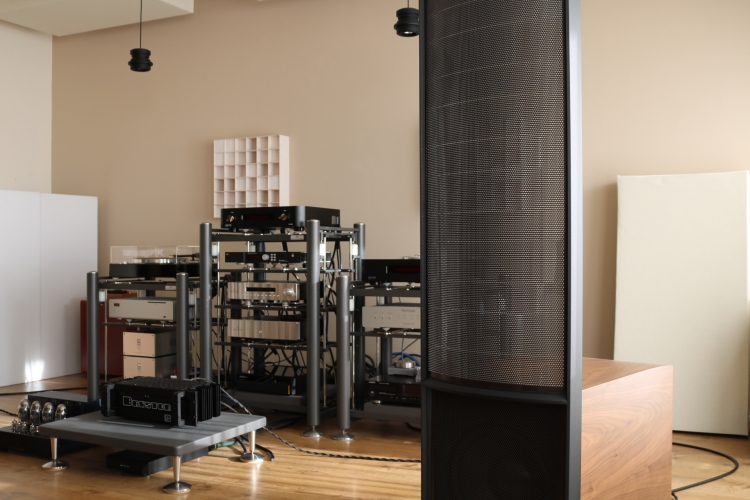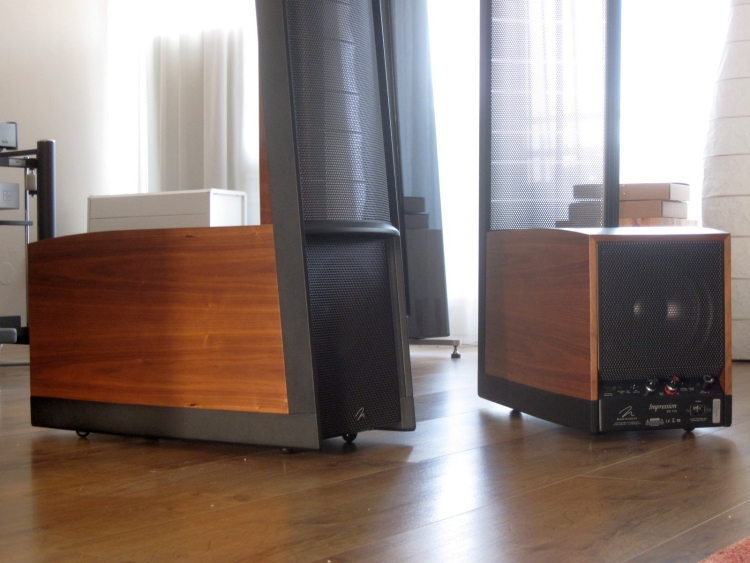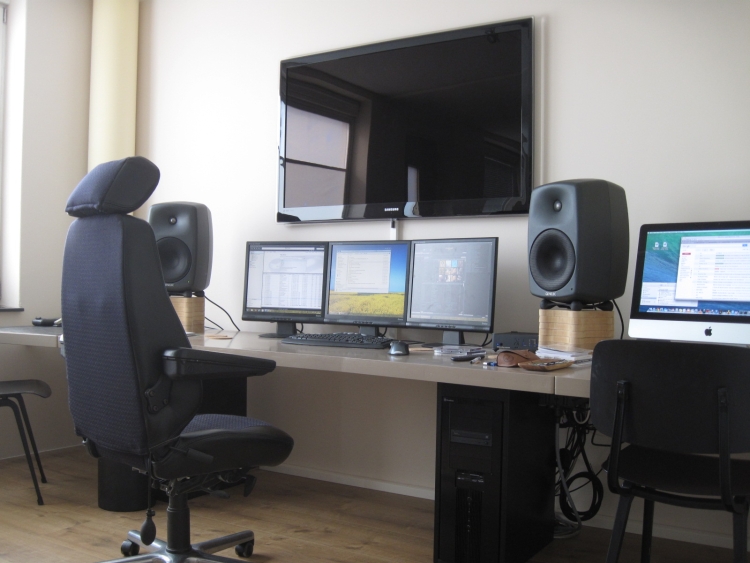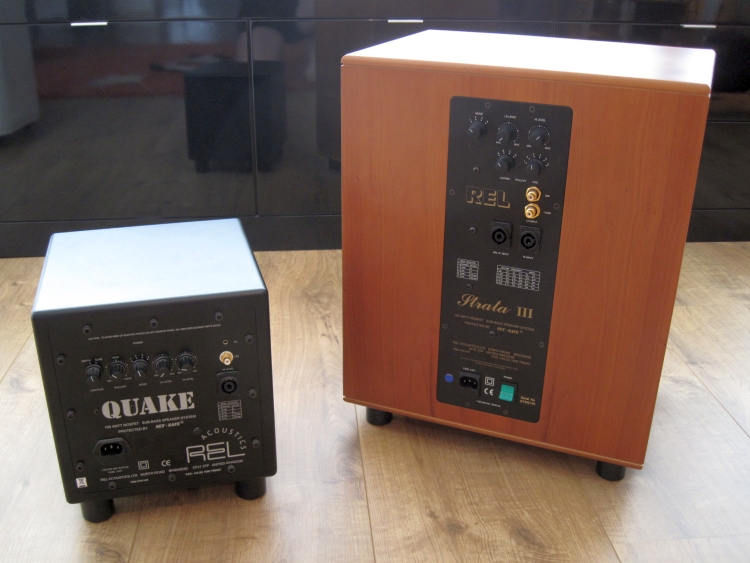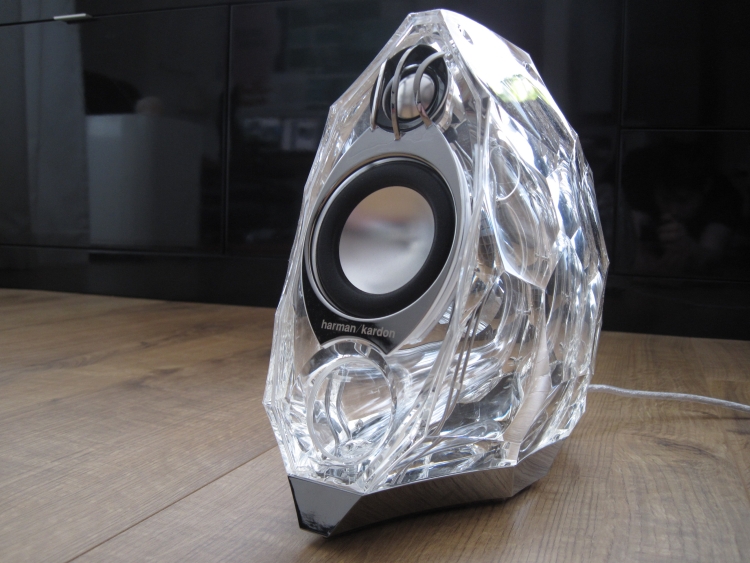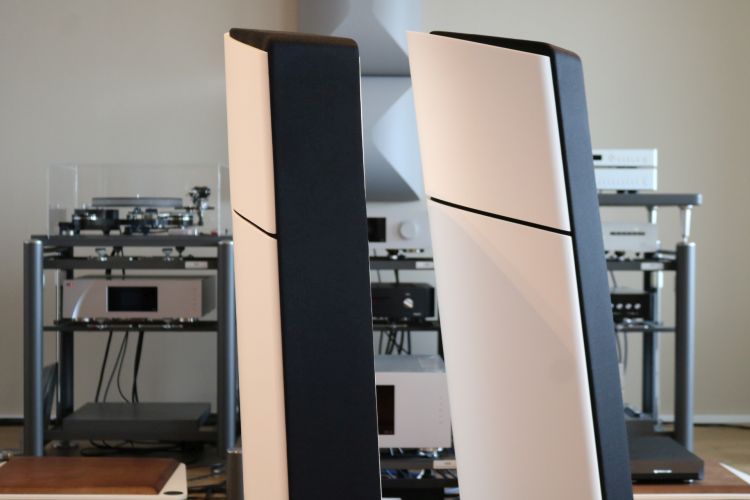
ARPEC
Housed in a separate aluminum surrounded, passively cooled space inside of the Stilla cabinet are the ARPEC electronics and two 250W Ncore amplifiers and the power supply. ARPEC (Analogue Room size and Placement Extention Control) enables very easy and intuitive room and placement adjustments, controlled by two rotary knobs placed on top of each individual loudspeaker. One knob controls adjustment for the room size, varying from XXS to M to XXL, the other adjustment for the speaker placement, varying from a position in a corner to a position completely free of walls.
Any conversion to digital and back incurs a delay and this can gravely affect the bass section’s phase alignment to the midbass driver. Keeping the signal in the analog domain neatly avoids this issue altogether. The two knobs are not level controls nor a simple equalizer, but they drive a complex network of passive filter components to control the amount of bass roll-off and a continually variable counter measurement for room-induced bass reinforcement or -suckout to achieve an ideal balance in just about any room.
Thanks to the ARPEC system, the speakers are easy to place and get perfectly balanced. Thanks to the ability to make individual speaker adjustments one can also overcome any asymmetry of the listening room’s layout relative to the left and right speaker, again, without any time delay or A/D losses inflicted by DSP solutions.
Easy to drive
A great benefit of the Stilla’s active bass section is that the speakers have only very modest power requirements. The bass section is already taken care of by the twin Hypex Ncore amplifiers in each speaker while the midrange and treble sections have an essentially flat impedance curve. The speakers have a nominal 8-Ohm impedance response without any of the impedance peaks associated with steep filters or vented enclosures and a 90dB sensitivity which means that you can drive them with virtually any amplifier, including low-powered SET amplifiers.
Getting on with it
Phew, at this point in a review, I feel like I normally arrive at the conclusion! And to think that I still only covered the surface of the technology that goes into the Stilla loudspeakers. I hope that by now the price tag starts to make sense. And for those who are still on the fence, just wait to read what I have to say about their performance!
For those who would like to read even more about the technical aspects of these speakers, I recommend heading to the technology section on the Aequo Audio website where all the highlights are covered in great detail.
System Context
The Stillas will be listened to using the Antipodes K50 Music Server connected via AES/EBU to the CH Precision C1 DAC which, in turn, is connected via CH Balanced Link XLR cables to the CH Precision A1.5 amplifier with Jorma Trinity speaker cables. In a later stage, I will include the Audio-GD Master 1 preamp, NuPrime ST10 power amp and Driade Flow 405 speaker cables. The Stillas are powered with the standard Neutrik Powercon-fitted cables.
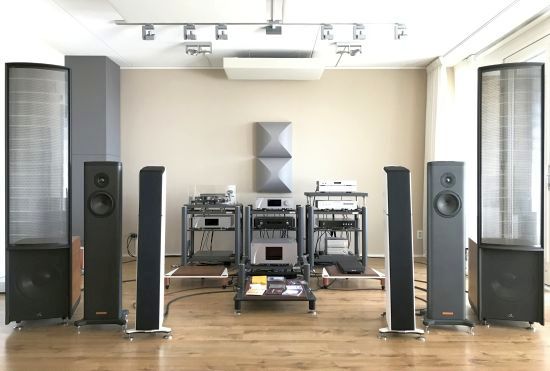
Listening
Disrespectfully, I started listening to the Stillas in a compromised position way too close together, between the Magico S1 MkII’s which are themselves positioned in between the Logans. Couldn’t sound great at all, one would think. Wrong! With the two controls set simply in their neutral positions, the Stillas were impressive right from the start. The bass was deep and powerful but not boomy and the focus was remarkably good. Even more amazing was the depth and width of the soundstage, better than with the Magicos, actually, which are actually positioned more ideally. That certainly whetted the appetite!
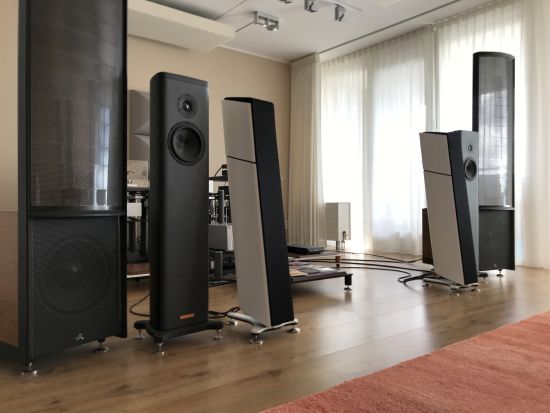
Note how the Stillas are more narrow and less tall than the Magicos and even appear considerably sleeker than medium-sized monitor speakers
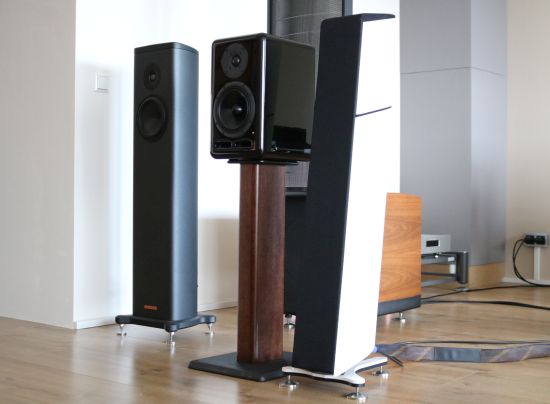
With the Magicos moved out of the way and the Stillas positioned in their place I felt that I was already very close to their ideal positions. The imaging depth further increased and the focus became even better, almost startlingly so. I’m used to a high level of accuracy and very stable imaging from the Magicos but the Stillas have even more solid and considerably deeper imaging. They make achieving reach-out-and-touch imaging seem easy! In terms of bass, now that they are in the Magico’s old spot, the Stillas sound a little cleaner but it’s not a world of difference. It is remarkable how easy they are to get sound right. But with speakers of this caliber, it’s only natural to try and wring the maximum in performance out of them. And so, the Logans also had to make way. That’s something that I don’t enjoy doing, not because they are so heavy (which they really aren’t) but because they are so incredibly finicky to get right in terms of focus and imaging. With Martin Logans, it really comes down to the millimeter.
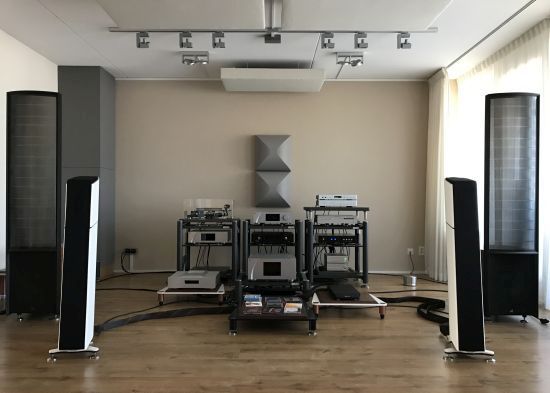
With the Logans out of the way, I was free to position the Stillas anywhere that I liked, but guess what? They were apparently already pretty much in their ideal positions! Only ever so slightly more apart and maybe 5 cm closer to the listening position but that was it. What is left is some room in regards to the toe-in. The manufacturer advises strong toe-in with the speakers almost pointing straight at my shoulders. While that produces a very strong and solid image I personally prefer the sound with the speakers toed in slightly less. This way, arguably you lose a little directness and solidity but you gain a truly holographic soundstage that spans all the corners of my listening room.
Actually, their soundstaging capability is one of their greatest assets. There were several visitors who asked whether it were really the Stillas that played and not the Logans that were positioned next to them. That’s how wide the speakers image and also, this gives a handle on how uncolored they sound.
With no walls in sight, I revisited the adjustment knob positions. It was interesting to note that the wall boundary knob (selective gain) added bass but without it ever becoming boomy. Of course, you can overdo it and offset the balance between bass and mid/treble, but no matter the setting, the bass always of very good quality. Turning the knob counter-clockwise thins out the bass and this was clearly not ideal for my large listening room but as I would find later, this will actually work wonders in the smaller listening room. The midway position remained ideal.
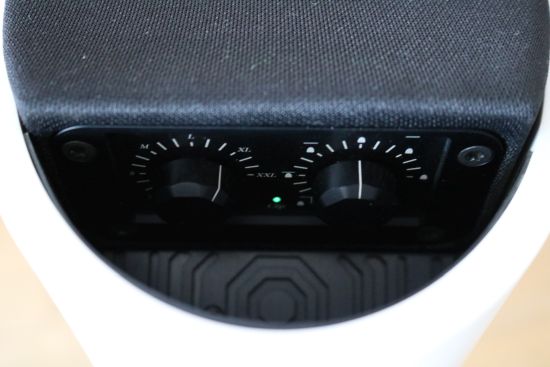
Changing the position of the room size knob (roll-off) was also interesting. What this control does is to roll off (anti-clockwise) or extend (clockwise) the bass which, in my mind, would curtail a large speaker such as the Stilla in its response, making it sound like a monitor. In reality, nothing of the sort happens. As Ivo knows first-hand from having done countless measurements, room boundaries not only add gain but also extend (or, in certain cases, curtail) the bass. And with the knowledge gained from years of experiments, the filters in the ARPEC system are meant to precisely tap into these acoustical phenomena. And so it happens that the Stilllas sound fully full-range even though the room size control is set to the middle position and, apparently, some roll-off is already happening. As it turned out, once all the speakers were out of the way, the control could be turned up two notches to make for an enormously satisfying solidity and dynamic heft that, frankly, is simply not expected when you consider the Stilla’s baffle is a mere 16 cm narrow.
Moreover, the Stilla’s bass is not merely great given the speakers’ size, it’s absolutely great full stop. I mean, the Magico’s may ultimately be slightly tighter and slightly more coherent (more on this later) but they sound like a small monitor compared to the Stillas. Actually, the Stilla’s deep and full-bodied presentation has a lot more in common with that of the Martin Logan ESL15A’s. Sure, the Logans have even more authority but with their huge subwoofer cabinets and twin 12-inch (30 cm) drivers per speaker, that is only fair. Besides, the Logans are considerably more costly and considerably less likely to pass the WAF test. Even so, the Logans do not seem to reach any lower than the Stillas which is really quite extraordinary.
Not only is the bass deep and powerful, but it also goes loud, too! Admittedly, I do not normally play very loudly but the Stillas had absolutely no problem playing more loudly than I can comfortably sustain. Especially given the small size of the woofers it is amazing that there are simply no port noises or other signs of stress.
Lastly, the bass is fast, dynamic and coherent and it crosses over to the midrange with a level of seamlessness that rivals that of my ESL15A’s between the active bass section and the passive midrange and treble. The latter is something that Martin Logans with their very different driver materials, understandably, still cannot do 100% perfectly. With the latest Logan models, the transition is no longer audible but if you focus on the bass or the midrange then you can still detect that the foil simply performs very differently from the bass section. With the two-way Magicos as a reference, the Stillas show a hint of thickness in the bass that is not there in the midrange but it really is quite subtle. Using the two ARPEC controls, you can reduce the bass output somewhat to subjectively better match the midrange but I found that this has the side effect of making the midrange stand out a little. But at this point, I’m splitting hairs, really, and it’s important to note that we are talking about a truly full-range system the size of small column speakers. Many big, multi-driver, speakers would dream of sounding as fast and coherent as the Stillas.
